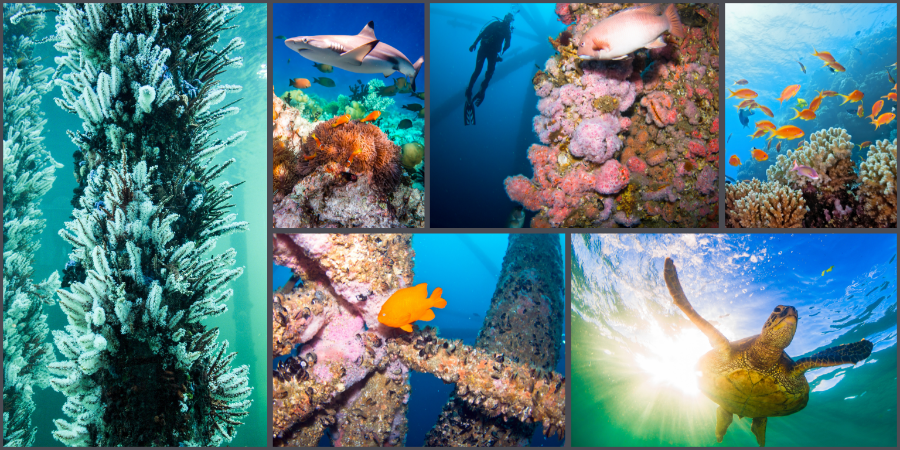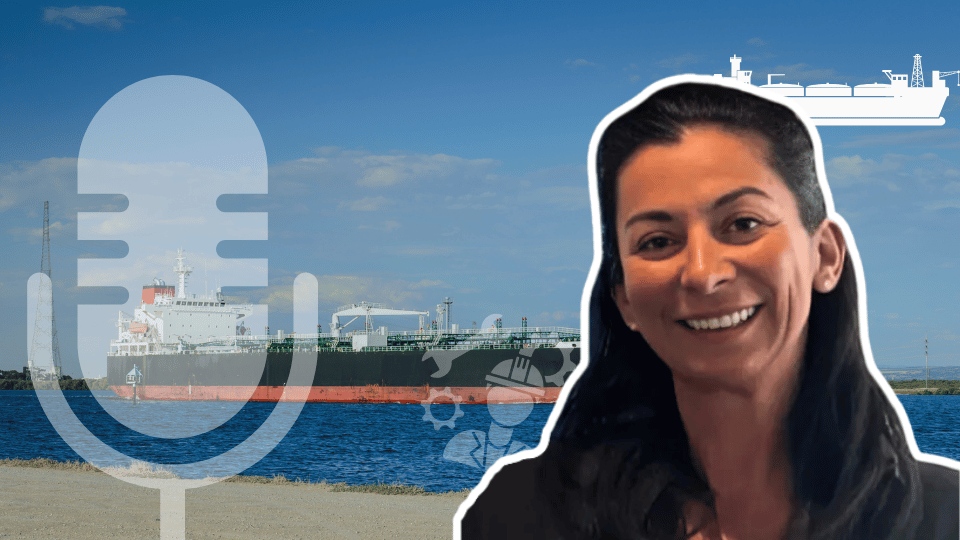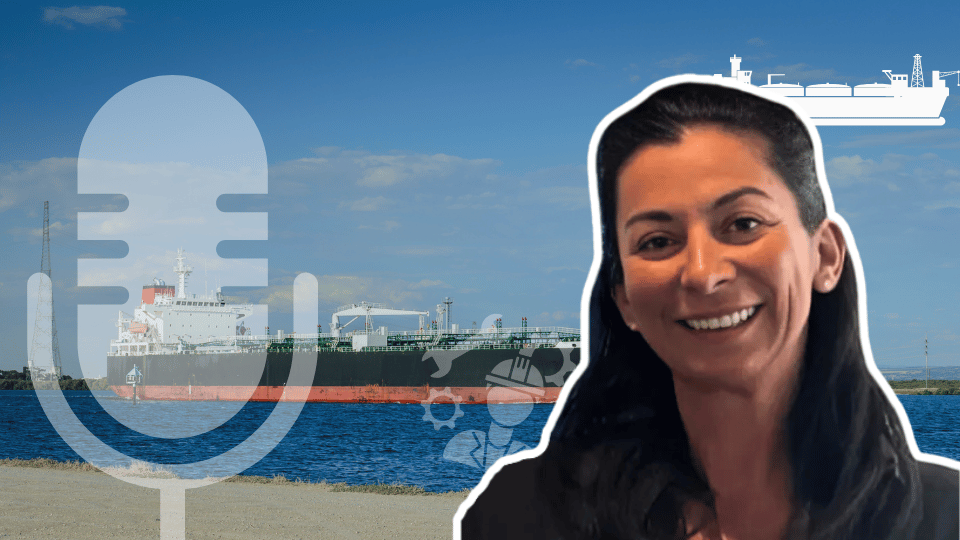Life After The End Of An Offshore Oil Rig
23 Jun, 20214:10The debate about what to do when an Offshore Oil and Gas Rig comes to the end of i...

The debate about what to do when an Offshore Oil and Gas Rig comes to the end of its life remains prevalent across the globe. There are more than 12,000 offshore oil and gas installations across the world but there's no ‘one size fits all’ solution when it comes to decommissioning them. In some countries, companies are legally obliged to remove the whole rig once it has reached the end of its life, but this can be destructive to the surrounding marine wildlife who have made the structure their home.
Because of this, some countries have decided to keep the rigs in place and implement a ‘Rigs-to-Reefs’ programme, which aims to preserve the ecosystems that have developed throughout the life of the rig.
So, what do these incentives involve, what does this mean for the offshore Oil and Gas industry, and what makes these initiatives so successful?
Rigs-to-Reefs Programmes
Rigs-to-Reefs programmes involve converting decommissioned offshore oil rigs into artificial reefs. The concept was first implemented about forty years ago, in the 1980s, in the Gulf of Mexico. In 1984, the American Congress signed the National Fishing Enhancement Act. This act recognised how beneficial artificial reefs could be, encouraging states to turn decommissioned oil and gas rigs into reefs.
Since then, five coastal states on the Gulf of Mexico have implemented Rigs-to-Reefs programmes and more than 500 platforms in the region have been converted into artificial reefs. Such programmes have also been executed in Malaysia and Brunei Darussalam.
Blue Latitudes, founded by Emily Hazelwood and Amber Sparks in 2014, has been working hard to convey to companies, stakeholders, governments and local public opinion that converting rigs to reefs offers many ecological benefits and is a significantly cheaper option over that of sending engineers to dismantle the structure. They’ve helped to transform rigs into reefs from Africa to Thailand, preventing more than a dozen large marine ecosystems from being wiped out.
All rigs undergo extensive ecological evaluations to determine any potential value they might add to the local ecosystem and whilst not all rigs are suitable candidates for reefing, many of them have become extremely rich ecosystems over the years which are worth preserving.

The ecosystems living under the platform
It has been shown that offshore rigs can be some of the most fertile and productive fish habitats in the world. Their structure provides ideal space for food, a safe breeding ground, and shelter from predators. For some species, these rigs offer an even better habitat than natural reefs.
When installed, these platforms provide hard surfaces in open water on which a variety of sessile organisms (organisms which anchor to a surface and can’t move about freely, such as certain types of algae, barnacles, mussels, anemones and coral polyps) thus transforming it into an artificial reef. Some of these platforms may also exclude commercial and even recreational fishing, providing a safe haven for fish and other sea creatures to thrive.
According to Chris Lowe, Marine Biologist at California State University, the propitiousness of these rigs is imparted by their considerable height. They act as a pinnacle and enable fish to go down into deeper waters as they mature, without having to leave their habitat and refuge. An average four-leg structure can provide between 2-3 acres of habitat for a variety of marine species, whilst a larger eight-leg platform can become a home for up to 14,000 fish.
Once animals and organisms adopt these structures as their homes, they can then start reproducing, creating an environment that is bustling with life.

What does the Rigs-to-Reefs process mean for Oil and Gas companies?
When a rig is left untouched and left to rust, it can pose a threat to the environment around it. On the other hand, removing the entire structure is extremely expensive - the total removal of an oil rig can cost millions of dollars. A 2016 study by IHS Markit estimated that more than 600 offshore structures throughout the world would be decommissioned between 2017 and 2021, with a further 2,000 by 2040. This would result in a total cost of 210 billion USD. Not only that, but removing the whole structure also destroys the whole ecosystem that has developed over the life of the platform.
Converting a rig into a reef, on the other hand, is a lot less work-intensive and less expensive, potentially saving a company millions, and preserving the ecosystem that have developed around the rig. Once the platform isn’t profitable anymore, the wells are sealed off and the above-water structure removed, leaving the below structure where wildlife has flourished.
In the US, companies who do decide to transform their decommissioned rig into a reef are only required to spend half of their decommissioning budget on the state’s artificial reef program. This money is spent on maintaining the underwater structure, education, and marine conservation. With such abundant life around these rigs, they also become hotspots for snorkelling, diving, and recreational fishing, thus boosting local tourism.

Which oil rigs have been transformed into reefs?
Although the Rigs to Reefs programme can be beneficial to oil companies and marine-life alike, the scheme has only been adopted in a select few countries.
Gulf of Mexico
The Gulf of Mexico has the largest concentration of offshore oil rigs in the world, making it an ideal location for the rigs to reefs programme. Over 150+ platforms had been converted to permanent reefs. Of these, 90 were towed to new locations and 61 were left in their original location.
For example, In 1979, Exxon Mobil relocated their subsea production system from offshore Louisiana to an artificial reef site in Florida.
Louisiana has 94 of the platforms-turned reefs, Texas has 50, Alabama has 4, and there are 3 in Florida.
Brunei
Brunei's rigs-to-reefs programme has been operational since 1988 with Brunei Shell Petroleum being a major contributor – over the last 40 years, the offshore operator has towed numerous old platforms and jackets to designated artificial reef areas in the region.
Malaysia
Malaysia has no official rigs-to-reefs programme but a few of their rigs have been transformed. For example, in 1975, the Baram-8 platform was damaged and collapsed into the sea after a storm. The platform was subsequently converted into an artificial reef.
40 years later, the Baram-8 platform was used as a case study when converting Dana and D30 in Sarawak into reefs.
NES Fircroft and the Oil and Gas industry
NES Fircroft is a world-leading oil and gas workforce solutions provider and has over 50 years experience finding the very best talent across the globe. We recruit for jobs in the Downstream, Midstream, LNG and Upstream sectors, providing engineering and technical personnel for some of the world’s most important energy projects.
If you have staffing requirements or are searching for oil and gas jobs, we can help.










